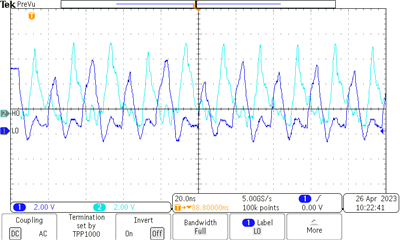Hi Experts,
We need your assistance with this customer's query below.
As they would like to know more about LMG1210 - High-Speed gate driver,.I can see that this driver supports up to 50MHz switching speeds. For bootstrapping circuit, what are the recommended parts for the bootstrap diode if operating at the maximum rated switching speed?
In the datasheet, the recommendation for very low on-time is to use synchronous bootstrap, if in case we want to go for a diode, can we use it? Which part would be suitable?
Please let me know if you need any other information from the customer.
Thank you in advance.
Best regards,
Jonathan



